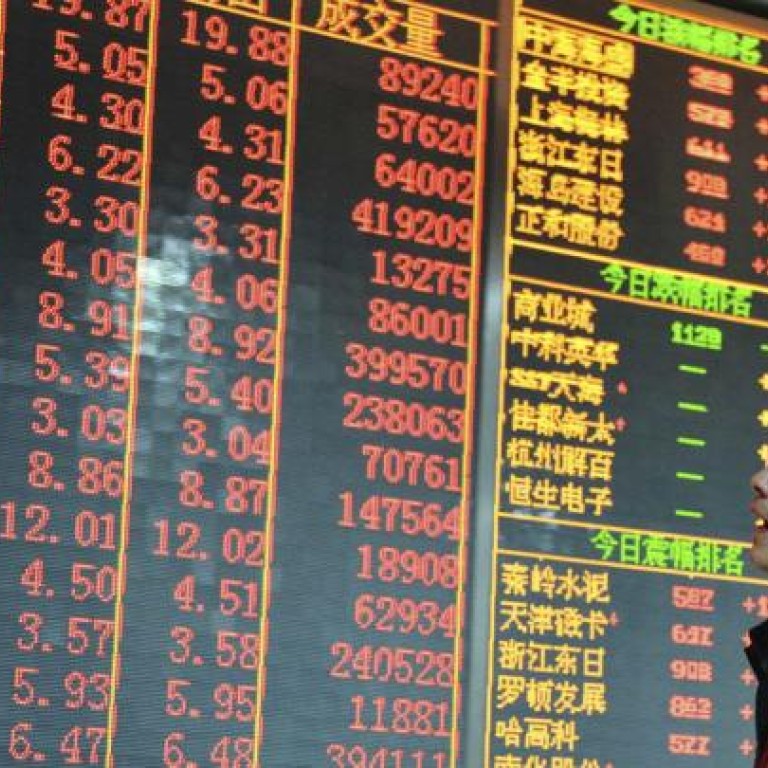
Cyclically bullish on China's market but a structural bear
The country's corporate earnings outlook is clouded by overcapacity arising from excessive investments in uneconomic projects
Acouple of days ago, peered into its crystal ball and argued that the month-old rally in mainland stock markets looks set to continue.
The prediction was based on a look at the amount of liquidity sloshing around China's financial system.
The general idea is that when there is a lot of surplus cash around, it flows into the equity market, driving up prices. And when money is tight, prices fall.
The liquidity measure I used was the ratio of China's narrow money-supply growth to the growth in nominal gross domestic product, which has proved a handy leading indicator of A-share market movements in the past.
With the latest reading trending higher, the liquidity situation appeared nicely positive for the A-share market.
Unfortunately, the latest reading for that particular measure was back in September, which obviously is not as up to date as investors would like.
So I am grateful to Ajay Kapur, Asian strategist at Deutsche Bank, for suggesting I take a look at another, more current, liquidity-based measure that he has long followed as a cyclical leading indicator for China's A-share market.
Instead of using narrow money growth relative to GDP growth, Kapur prefers to look at the total amount of bank loans outstanding relative to the size of China's monetary base (currency in issue plus the banking system's reserves deposited at the central bank).
Shown by the black line in the first chart, this measures China's credit multiplier effect. And as the chart shows, when its rate of change turns positive, the A-share market's performance - shown by the blue line - generally follows around six months later.
Last year, the credit multiplier entered positive territory in May, and the stock market duly followed with a handsome rally in December.
Even better, the credit multiplier has continued to rise since, indicating that the A-share market rally should have further to run over the coming months.
But before you rush out and buy every A-share index fund you can get your hands on, Kapur has a word of warning.
Although his liquidity measure indicates that the short-term cyclical outlook for A shares is positive, he warns that the longer-term structural prospects for the mainland market are altogether more ominous.
In particular, he is unnerved by the sharp rise over recent years in China's M2 money-supply measure relative to its GDP.
As the second chart shows, this measure is rapidly approaching 200 per cent. In contrast, the ratio for the United States stands at just 64 per cent.
"This tells me that China is a massively leveraged economy," he says, warning that with too much money around, companies are investing far too much in uneconomic projects.
Too much capital expenditure is like a diet overly rich in fat, he says. It clogs the arteries and leads to a heart attack.
All the investment that's going on will lead to overcapacity. Combined with government policies aimed at pushing up wages and a currency that has appreciated 25 per cent in real effective terms over the past five years, this overcapacity will severely depress China's corporate margins and hammer earnings.
"The profit outlook scares me," Kapur says.
In contrast, the earnings outlook for the US and Europe, which have already suffered their heart attacks and where companies have since cut investment back to the bone, looks relatively healthy.
So although the A-share market rally should continue over the near term, the current bull run is merely a liquidity-driven cyclical upswing.
In the longer run, investors might be better off looking towards US and European markets.

